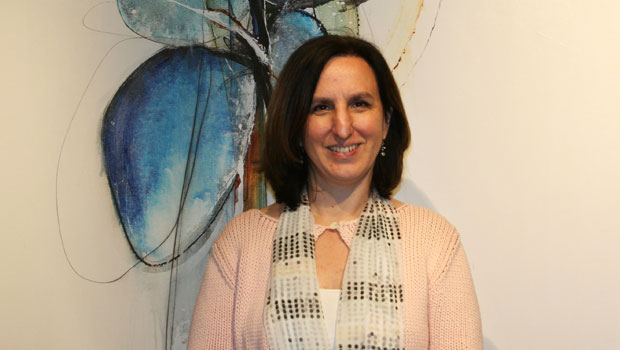Meditating: Easier — and more beneficial — than you think

Everyone from the Seattle Seahawks to Ellen DeGeneres does it. Linda Kiel explains why meditating is worth trying and how easy it is to start.
by Linda Kiel, MA, Kaiser Permanente Washington Health Research Institute (KPWHRI) project manager and organizer of an onsite weekly meditation session
I first started meditating in 2003, for two reasons. The first is what you’d expect — I was going through a chaotic time and wanted some peace. The second was a curiosity about meditating. I lived in Japan and South Korea when I was young, and touring the famous temples made me wonder what meditation was all about. And the people who did it seemed so peaceful!
Fourteen years after I started meditating, my life has changed, mostly for the better. I can’t say it’s all from meditating but the practice has had a profound impact on my life, mainly by calming me down. I’m pretty high strung, and meditation gives me an escape hatch out of intense emotions.
Through the years, meditating has helped me become familiar with my emotions and thoughts. Now, I don’t take them so seriously. Sometimes, I can just wait for them to pass because meditation gives me a little space between feeling or thinking something negative and taking action. That space helps me in my relationships at work, home, and in the community. I feel more in control and less at the mercy of my feelings.
This doesn’t mean that I don’t feel things intensely or don’t get unreasonable or reactive, but usually, I can be a bit detached from negative feelings. My internal dialog goes something like this: “Oh, I’m really angry about that email. My face is flushed and I can feel my heart racing.” Then, “Yes, I know Linda, you feel slighted/ignored/disrespected, poor thing! You know you’ve felt that before. Maybe you should go for a walk until you cool down.”
Meditation: Supported by KPWHRI evidence and culture
KPWHRI research shows that mindfulness meditation can help relieve back pain. I love that we’re doing this type of research and hope to see more. I was taught to meditate using a framework that boils down to “just sit and observe.” I know there are other approaches and I’d like to see research comparing the effectiveness of different meditation techniques for specific health outcomes.
Research at KPWHRI might be why, about two years ago, people at work starting asking me about meditation. At the time, KPWHRI was also increasing its focus on what creates a positive, supportive work environment. For these reasons, I thought there would be interest and support for a meditation group. Personally, I wanted to meditate with people at work. I imagined a workplace where everyone stopped what they were doing, and got together to just be silent with one another. That was really appealing to me. It’s nice to share peace and quiet with my co-workers.
The KPWHRI meditation sessions are open to everyone. You don’t have to be an expert and you don’t have to have your own meditation practice. There’s no entrance credentials or quiz at the end, and no thought-police making sure you are meditating “correctly.” You can just get away from your desk, sit in a quiet room, listen to the doors in the hall slam and the traffic noise outside and do nothing for a few minutes or a half hour. What could be better than that in our busy lives?
Meditation basics
I think a lot of folks have definite ideas about meditation. People often say to me, “I tried to meditate, and I just had a bunch of things running through my head so I didn’t do it right.” That’s like saying, “I tried to eat. I put food in my mouth and chewed and swallowed, so I didn’t do it right.” But guess what, you did do it right. You are meditating as long as you are sitting quietly and making an attempt, no matter how small and momentary, to notice yourself and the world around you. That’s all it is, really.
It truly doesn’t matter if you’re distracted or focused, sleepy or alert, blissful or angry, because the point is to note how you are in that moment. Stay with it and don’t judge it. If you can’t stay with it, notice that. No matter what, you are becoming curious about yourself, and learning to observe yourself, a habit that can support you when times are hard.
It’s true that sometimes, a happy, peaceful feeling comes during meditation and if you don’t feel that right away, you might think, “I’m not doing it right.” My first few years of meditating, I had to sit through a lot of distracted and difficult thoughts and emotions before I could maintain that peaceful feeling for longer than a few seconds. I also couldn’t force it. If I did, I would just start judging myself and feeling anxious, which made me more distracted.
Actually, seeing how my mind churns through distractions, thoughts, emotions, and sensations has been my most valuable lesson from meditation. The peaceful, nondistracted states feel wonderful, but in the end, it’s the hard times in meditation that have really taught me the most about myself.
Learn more about Kaiser Permanente Washington Health Research Institute. Sign up for our free monthly newsletter.


